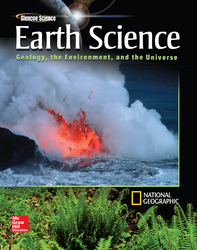1 A) telescope B) Very Large Array C) spinoff D) mare 2 A) sonar B) a GPS C) a reflecting telescope D) a Foucault pendulum 3 A) Reflecting B) Very Large Array C) interferometry D) refracting 4 A) the amount of sunlight a surface absorbs B) meandering valleylike structures C) the light areas of the Moon D) the amount of sunlight a surface reflects 5 A) maria B) highlands C) rays D) rilles 6 A) rays B) highlands C) rilles D) maria 7 A) core B) crust C) lower mantle D) outer core 8 A) oval in shape B) geologically young C) filled with granite D) impact craters 9 A) The crust is half as thin on the far side. B) There were no impacts on the far side. C) Lava did not fill in the far side. D) The crust is twice as thick on the far side. 10 A) There are no living organisms. B) There are no rocks. C) There are no people on the moon. D) There is no atmosphere. 11 <a onClick="window.open('/olcweb/cgi/pluginpop.cgi?it=jpg::::/sites/dl/free/0078746361/561788/113_lunfts_gm_280p_alt.JPG','popWin', 'width=NaN,height=NaN,resizable,scrollbars');" href="#"><img valign="absmiddle" height="16" width="16" border="0" src="/olcweb/styles/shared/linkicons/image.gif"> (9.0K)</a> A) A B) B C) C D) D 12 A) highlands B) rays C) rilles D) maria 13 A) the ecliptic B) the altitude C) the solar day D) the revolution 14 A) tropic of Cancer, at a maximum B) equator, at a maximum C) tropic of Capricorn, at a minimum D) tropic of Capricorn, at a minimum 15 A) asteroid impacts B) comets C) volcanic eruptions D) internal processes 16 A) 4.6 X 106 years ago B) 4.6 X 107 years ago C) 4.6 X 108 years ago D) 4.6 X 109 years ago 17 A) Earth formed before the Moon. B) The Moon formed before Earth. C) Earth and the Moon formed at about the same time form dust and gas. D) The Moon was once part of Earth and broke away as a result of a large impact.





